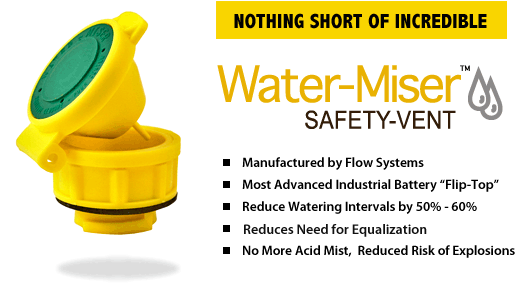Just stumbled into this product, Hydrocap, at hydrocapcorp.com
Blurb from their website, "A HYDROCAP VENT replaces a battery's regular cell cap. When the cell is gassing, the hydrogen and oxygen gasses are vented into the HYDROCAP. Inside a HYDROCAP, hydrogen and oxygen gases are catalytically recombined into pure water which is returned to the battery cell - eliminating explosive hydrogen gas concentrations, and washing acid fumes and vapors back into the battery cell. This combination greatly reduces watering maintenance, makes metal corrosion virtually non-existent, and creates safer operating conditions. Electrolyte returned to the cell also increases the useful power available and lengthens battery life."
It seems battery manufacturers would already do this so I'm skeptical, but perhaps they have a bulletproof patent or something. Does anybody have experience or knowledge of these?
Blurb from their website, "A HYDROCAP VENT replaces a battery's regular cell cap. When the cell is gassing, the hydrogen and oxygen gasses are vented into the HYDROCAP. Inside a HYDROCAP, hydrogen and oxygen gases are catalytically recombined into pure water which is returned to the battery cell - eliminating explosive hydrogen gas concentrations, and washing acid fumes and vapors back into the battery cell. This combination greatly reduces watering maintenance, makes metal corrosion virtually non-existent, and creates safer operating conditions. Electrolyte returned to the cell also increases the useful power available and lengthens battery life."
It seems battery manufacturers would already do this so I'm skeptical, but perhaps they have a bulletproof patent or something. Does anybody have experience or knowledge of these?

Comment